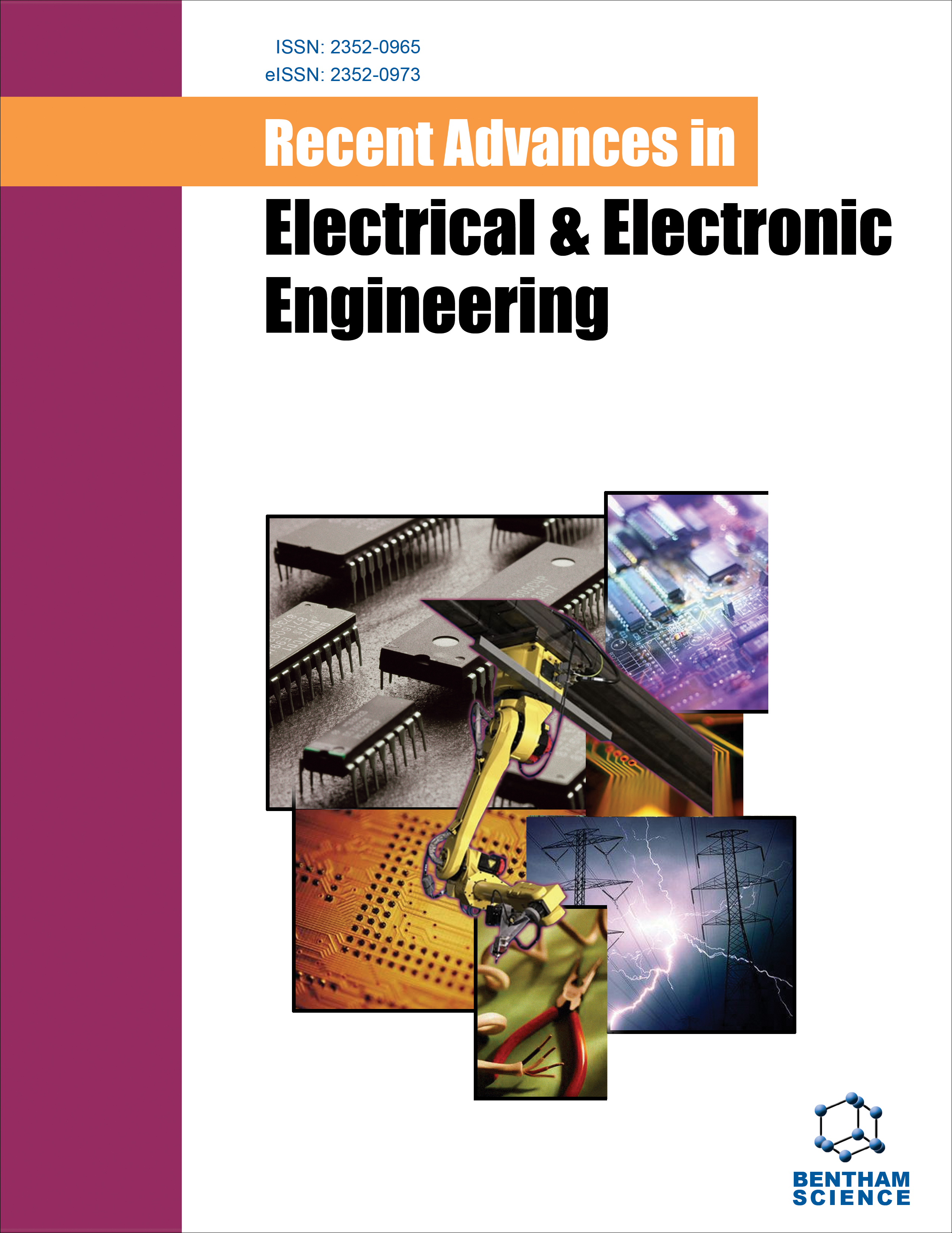- Home
- A-Z Publications
- Recent Advances in Electrical & Electronic Engineering
- Previous Issues
- Volume 16, Issue 2, 2023
Recent Advances in Electrical & Electronic Engineering - Volume 16, Issue 2, 2023
Volume 16, Issue 2, 2023
-
-
Modeling of Nonlinear Load Electric Energy Measurement and Evaluation System Based on Artificial Intelligence Algorithm
More LessAuthors: Xiaokun Yang, Yan Liu, Ruiming Yuan, Sida Zheng, Xin Lu and Mohd A. ShahBackground: To improve the modeling efficiency of nonlinear load electric energy metering evaluation systems, a method based on an artificial intelligence algorithm was proposed. Methods: First, the artificial glowworm swarm optimization extreme learning machine, a potent tool that employs the artificial firefly algorithm for global optimization, was introduced. Then, the input weighting matrix, hidden layer offset matri Read More
-
-
-
Design and Development of a Data Structure Visualisation System Using the Ant Colony Algorithm
More LessAuthors: Xiaojuan Li, Mudassir Khan and Mohd D. AnsariAim: A data structure visualisation system uses object-oriented thinking and COM technology to dynamically and interactively simulate and track data structure algorithms and realize the dynamic synchronisation and visualisation of abstract data structures and algorithms using the data modelling function and self-test function. Background: Teaching data structures and algorithms is difficult because of their abstraction a Read More
-
-
-
Nonlinear Harmonic Electric Energy Metering System Based on the Wavelet Transform
More LessAuthors: Chong Li, Hongtao Shen, Hao Wang, Yi Wang, Bing Li, Chuan Li, Rongkun Guo and Amit SharmaBackground: To solve the problem of accurate measurement of nonlinear harmonic electric energy, a method for improving harmonic electric energy measurement based on the discrete wavelet packet decomposition and reconstruction algorithm was proposed. Objectives: A reactive energy measurement method combined with Hilbert transformation was designed, and the frequency characteristics of wavelet functio Read More
-
-
-
Ant-Colony-Algorithm-Based Intelligent Transmission Network Planning
More LessAuthors: Jingzhong Yuan, Jia Guo, Jinghai Xie, Shihua Lu, Dongyu Su, Mi Sun and Mohd A. ShahBackground: The efficiency of wireless sensor networks is limited by limitations in energy supply. Efficient routing strategies should be designed to save and balance the energy consumption of each node in a wireless sensor network. Aim: In this study, a transmission network based on an ant colony algorithm was proposed to meet the power load demands of a city. Objective: Based on the chaos ant colony algorithm, using a c Read More
-
-
-
Information Leakage Tracking Algorithms in Online Social Networks
More LessAuthors: Yusong Zhang, Mohammad Shabaz and Shehab M. BeramAim: To explore information leakage tracking algorithms in online social networks and solve the problem of information leakage in the current online social network, a deterministic leaker tracking algorithm based on digital fingerprints is proposed. Background: The basic working principle of the algorithm is that the platform uses plug-ins to embed unique user-identifying information before users try to obtain digital media suc Read More
-
-
-
Key Technologies of Data Security and Privacy Protection in the Internetof- Things Group Intelligence Perception
More LessAuthors: Hao Wu, Jyoti Bhola, Rahul Neware and Sathyapriya EswaranAim: To study the key technology of privacy protection and data security in the Internet of Things group intelligence perception, a cryptographic-based technology was proposed. Background: First, the background of group intelligence perception and three existing problems were briefly introduced, and the inherent contradictions among the three problems, which led to some challenges in this study, were reported. Objec Read More
-
-
-
Computer Network Technology for the Construction of Engineering Safety Supervision and Management Systems
More LessAuthors: Weixing Xu, Vishal Jagota, Boussaadi Smail, Pooja Chopra and Arshpreet KaurBackground: Currently, the function of information construction in the supervision and management of construction project quality has become increasingly prominent and cannot be ignored by administrative departments. Objective: This study aimed to effectively supervise and manage engineering safety data and display the system construction intuitively. Moreover, a method based on computer network technology wa Read More
-
-
-
Study on Intelligent Analysis and Processing Technology of Computer Big Data Based on Clustering Algorithm
More LessAuthors: Xiaoming Liu, Md Rokunojjaman, Rakesh Kumar ER, Ragimova Nazila and Abdullayev VugarAim: Clustering belongs to unsupervised learning, which divides the data objects into the data set into multiple clusters or classes, so that the objects in the same cluster have high similarity. Background: The clustering of spatial data objects can be solved by optimization based on the clustering objective function. Objective: Study on intelligent analysis and processing technology of computer big data based on clusterin Read More
-
-
-
Detailed Study on Electronic Data Energy Consumption Monitoring System Based on the Construction of Internet of Things
More LessAuthors: Ruiling Yu, Boussaadi Smail, Rakesh K. ER, Khushmeet Kumar and Sujesh P. LalBackground: Buildings, in the traditional sense, are becoming increasingly incapable of meeting modern humans’ pursuit of high-quality living and working environments. With the increasing pace of urban development, modern buildings are becoming increasingly popular. Objective: We investigate an electronic data energy consumption monitoring system based on the construction of Internet of Things for the airport buil Read More
-
-
-
Information Extraction of the Vehicle from High-Resolution Remote Sensing Image Based on Convolution Neural Network
More LessAuthors: Yanmei Wang, Fei Peng, Mingyu Lu and Mohammad Asif IkbalAims: To effectively detect vehicle targets in remote sensing images, it can be widely used in traffic management, route planning, and vehicle flow detection. YOLOv3 deep learning neural network, which mainly studies the vehicle target detection in remote sensing images and carries out the target detection suitable for the characteristics of remote sensing images. Objective: This paper studies the information extraction of ve Read More
-
Most Read This Month
Article
content/journals/raeeng
Journal
10
5
false
en


